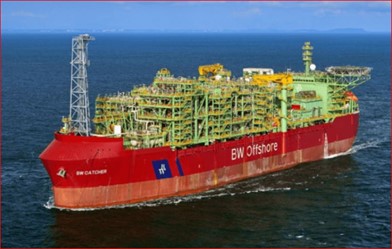Not all clients require a bespoke Investor Relations (IR) strategy. For many companies a standard IR strategy from a template will be adequate. But a company with strong differentiation factors (DF) will require an IR strategy that can tailored for them.
DFs are the factors that differentiate a company from its peers in the same industry. DFs are inherently important because they are the basis on which businessman decide to go into business. Every businessman believes his product/service is different and therefore he will succeed. The Chicken Rice seller believes his chicken rice is different, whether because his selling price is lower, or he’s already an established brand, or he uses a special breed of chicken, etc. Even the three Singapore banks DBS, OCBC and UOB believe they are different form each other. In what way? We can only find out if we have an in-depth conversation with their top Management.
Examples of possible DFs
^ This is not a complete checklist. When you do an in-depth study of a company’s business you may discover more DFs.
Have an in-depth conversation with the CEO. But before that, do a deep dive into the product and the industry. For example, if you are speaking to the CEO of an oil & gas company that specialises in building top-side modules for the oil and gas industry, then you should know what top-side modules are, and what they are used for.
Note: Top-side modules are processing units placed on the top side of offshore Floating Production Storage and Offloading platforms (FPSO) that perform various functions including separating crude oil (or gas) from the water and salt from the drilled fluid. An FPSO usually has several topside modules each having a different function. Photo below shows several top-side modules on an FPSO.

Dynamic Marine Engineering, a privately-owned company has been profitable all along, even during the depths of the oil and gas slump, when Brent Crude traded below US$60 per barrel between 2018 to 2021.
But the owners are now contemplating an IPO due to improved market conditions for oil exploration and drilling. The potential IR Consultant thinks the IPO documents on Dynamic’s business prospects are insufficient for a deep understanding of the company’s business for the purpose of crafting a post-IPO IR strategy. This is because IPO documents are written in such a way so as not to contravene Exchange rules and other possible legal liabilities. The ‘cautious’ language of the IPO documents may hide some insights that are useful for formulating an IR strategy.
However, pre-IPO, the CEO is not allowed to deviate from the IPO documents when he speaks or writes about the company’s business and prospects. Post-IPO, the IR Consultant has an in-depth with the CEO to have a deeper understanding of the company’s business and note down the company’s DFs. Here is a list of the IR Consultant’s findings:
Different Business model: Unlike other oil & gas production support companies, Dynamic eschews EPC (Engineering, Procurement, Construction) contracts and instead goes for remeasurement contracts. In such contracts, rates and schedules are pre-determined in the contract, and the contractor gets paid based on the work done. Under/Over performance are rewarded/penalised based on these pre-determined rates.
Innovative Technology: Recognising the shift towards sustainability Dynamic has adapted its top-side compressor technology to be able to do carbon capture and storage. The compressor will inject carbon dioxide captured from the air and pump it into depleted oil wells underground, thus removing the carbon dioxide from the air. This new product has passed its trials and us ready to market.
Project Track Record: Dynamic is the only company among its peers that has a perfect track record in delivering projects on time, within budget and meeting quality specifications
Financial strength: Dynamic is the only privately-owned top-side module fabricator that has as its significant (25%) shareholder, a sovereign investment fund. Its strong financial position and cash flow enables it to pay subcontractors promptly, and to incentivise them to deliver their work on time or even ahead of time, resulting in savings and bonus payments to Dynamic from the owners of the top-side modules.
Dynamic does not need funding, nor need it worry too much about its post-IPO share price. Its major shareholders are existing long- term investors such as the sovereign wealth fund, who will also be cornerstone investors in the IPO.
Dynamic’s crown jewels are its innovations and patents on the design of top-side modules with their embedded IoT sensors being able to track wear and tear and predict breakdowns. Their modular construction means that besides being used for offshore oil & gas, they can be customised for use in onshore oil & gas as well as in the pharmaceutical and petrochemical industries.
The IR strategy should therefore be focused on getting coverage and exposure for Dynamic’s technological advantages via industry technical journals, oil & gas consultants, and specialised industry exhibitions. The IR strategy should also provide for media interviews with Dynamic’s top Management including from the Engineering and Operations side.
While branding for engineering and construction businesses are less important than for example, for consumer products businesses, brand equity still counts. Engineering and constructions projects often have price tags in the millions of dollars. Track record, reputation, and customers’ trust and repeat customers count for a lot in such businesses. Thus, a brand audit should be conducted periodically.
The IR strategy should also have a crisis management component. This is because the nature of marine engineering with its high proportion of welding and handling of hazardous materials makes it more susceptible to work site accidents.